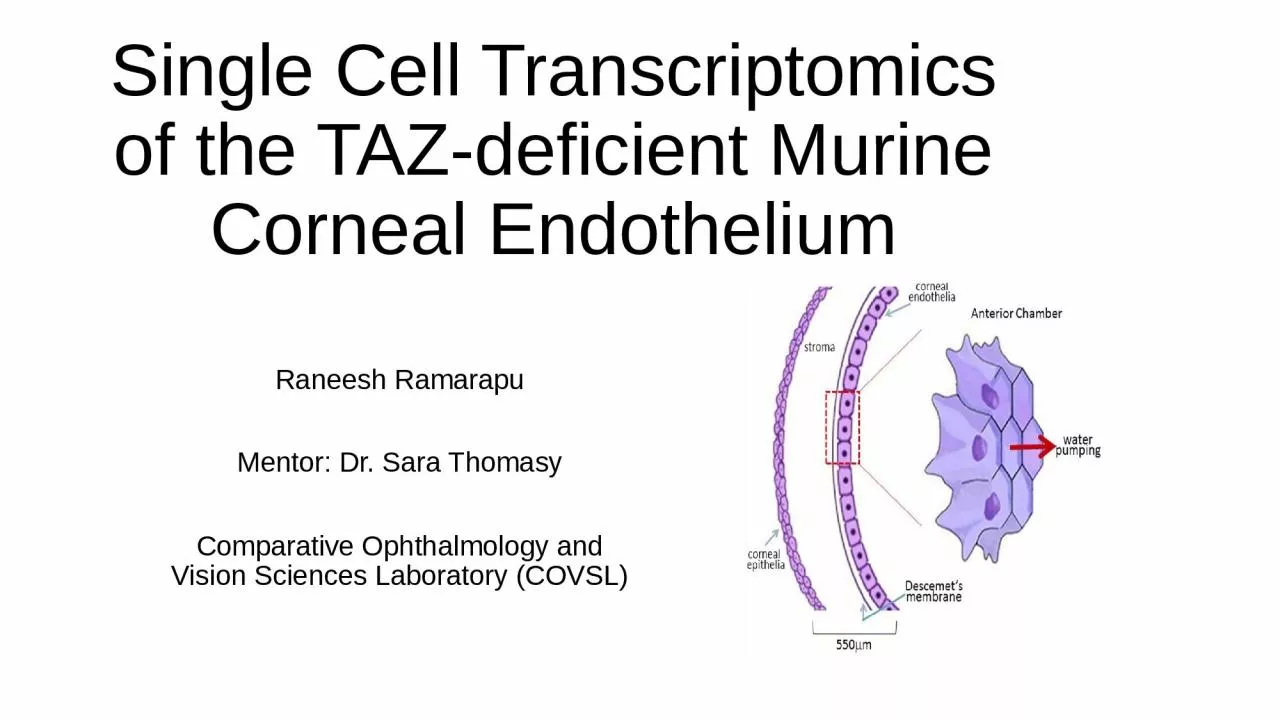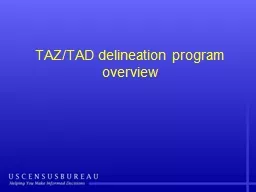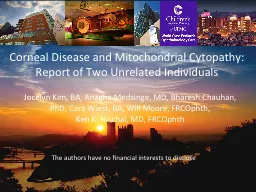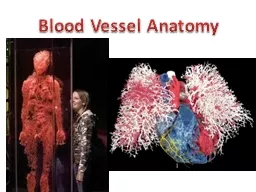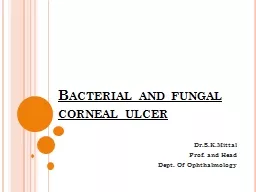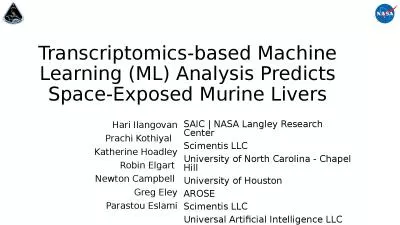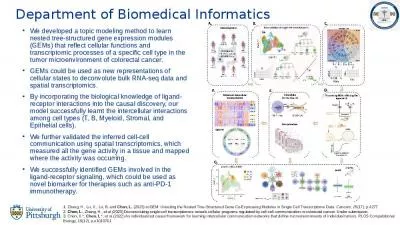PPT-Single Cell Transcriptomics of the TAZ-deficient Murine Corneal Endothelium
Author : jocelyn | Published Date : 2024-03-13
Raneesh Ramarapu Mentor Dr Sara Thomasy Comparative Ophthalmology and Vision Sciences Laboratory COVSL Corneal Endothelium Hexagonal single cell layer Nonproliferative
Presentation Embed Code
Download Presentation
Download Presentation The PPT/PDF document "Single Cell Transcriptomics of the TAZ-d..." is the property of its rightful owner. Permission is granted to download and print the materials on this website for personal, non-commercial use only, and to display it on your personal computer provided you do not modify the materials and that you retain all copyright notices contained in the materials. By downloading content from our website, you accept the terms of this agreement.
Single Cell Transcriptomics of the TAZ-deficient Murine Corneal Endothelium: Transcript
Download Rules Of Document
"Single Cell Transcriptomics of the TAZ-deficient Murine Corneal Endothelium"The content belongs to its owner. You may download and print it for personal use, without modification, and keep all copyright notices. By downloading, you agree to these terms.
Related Documents

